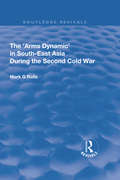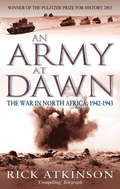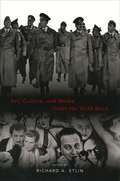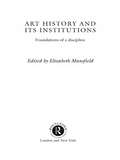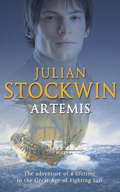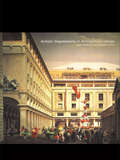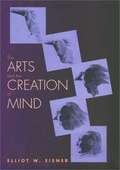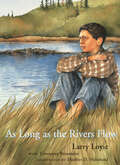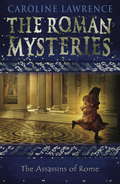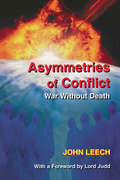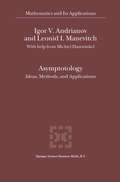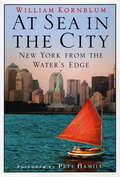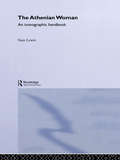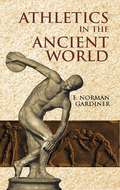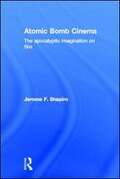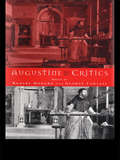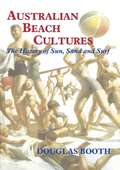- Table View
- List View
The Arms Dynamic in South-East Asia During the Second Cold War (Routledge Revivals)
by Mark. G RollsThis title was first publishd in 2002. This work uses the concept of the "arms dynamic" to identify and assess the various factors which influenced arms acquisitions of Southeast Asian states during the second Cold War period from 1979 to 1989, providing an essential basis for understanding contemporary developments. The book provides a comprehensive and systematic explanation of the reasons for arms purchases in SE Asia during the 1980s and aims to fill a gap in the literature by fully exploring arms procurement processes in the region prior to the end of the Cold War.
The Arms Dynamic in South-East Asia During the Second Cold War (Routledge Revivals)
by Mark. G RollsThis title was first publishd in 2002. This work uses the concept of the "arms dynamic" to identify and assess the various factors which influenced arms acquisitions of Southeast Asian states during the second Cold War period from 1979 to 1989, providing an essential basis for understanding contemporary developments. The book provides a comprehensive and systematic explanation of the reasons for arms purchases in SE Asia during the 1980s and aims to fill a gap in the literature by fully exploring arms procurement processes in the region prior to the end of the Cold War.
An Army At Dawn: The War in North Africa, 1942-1943 (Liberation Trilogy #Vol. 1)
by Rick AtkinsonThe liberation of Europe and the destruction of the Third Reich is a story of courage and enduring triumph, of calamity and miscalculation. In this first volume of the Liberation Trilogy, Rick Atkinson shows why no modern reader can understand the ultimate victory of the Allied powers without a grasp of the great drama that unfolded in North Africa in 1942 and 1943.Beginning with the daring amphibious invasion in November 1942, An Army at Dawn follows the British and American armies as they fight the French in Morocco and Algeria, and then take on the Germans and Italians in Tunisia. Battle by battle, an inexperienced and sometimes poorly led army gradually becomes a superb fighting force. Central to the tale are the extraordinary but fallible commanders who come to dominate the battlefield: Eisenhower, Patton, Bradley, Montgomery and Rommel.
Art, Culture, and Media Under the Third Reich
by Richard A. EtlinArt, Culture, and Media Under the Third Reich explores the ways in which the Nazis used art and media to portray their country as the champion of Kultur and civilization. Rather than focusing strictly on the role of the arts in state-supported propaganda, this volume contributes to Holocaust studies by revealing how multiple domains of cultural activity served to conceptually dehumanize Jews and other groups. Contributors address nearly every facet of the arts and mass media under the Third Reich—efforts to define degenerate music and art; the promotion of race hatred through film and public assemblies; views of the racially ideal garden and landscape; race as portrayed in popular literature; the reception of art and culture abroad; the treatment of exiled artists; and issues of territory, conquest, and appeasement. Familiar subjects such as the Munich Accord, Nuremberg Party Rally Grounds, and Lebensraum (Living Space) are considered from a new perspective. Anyone studying the history of Nazi Germany or the role of the arts in nationalist projects will benefit from this book. Contributors: Ruth Ben-Ghiat David Culbert Albrecht Dümling Richard A. Etlin Karen A. Fiss Keith Holz Kathleen James-Chakraborty Paul B. Jaskot Karen Koehler Mary-Elizabeth O'Brien Jonathan Petropoulos Robert Jan van Pelt Joachim Wolschke-Bulmahn and Gert Gröning
Art History and Its Institutions: The Nineteenth Century
by Elizabeth MansfieldArt History and Its Institutions focuses on the institutional discourses that shaped and continue to shape the field from its foundations in the nineteenth century. From museums and universities to law courts, labour organizations and photography studios, contributors examine a range of institutions, considering their impact on movements such as modernism; their role in conveying or denying legitimacy; and their impact on defining the parameters of the discipline.
Art History and Its Institutions: The Nineteenth Century
by Elizabeth MansfieldArt History and Its Institutions focuses on the institutional discourses that shaped and continue to shape the field from its foundations in the nineteenth century. From museums and universities to law courts, labour organizations and photography studios, contributors examine a range of institutions, considering their impact on movements such as modernism; their role in conveying or denying legitimacy; and their impact on defining the parameters of the discipline.
Artemis: Thomas Kydd 2 (Thomas Kydd #2)
by Julian Stockwin'In Stockwin's hands the sea story will continue to entrance readers across the world' - GuardianIn the great age of fighting sail, life ranging the seas for prey and prize money in the crack frigate HMS Artemis is fast and exciting.Now a true Jack Tar, Kydd sails into Portsmouth Harbour and a hero's welcome after a ferocious battle against the French. However his jubilation is cut short when a family matter threatens to take him from the life he has grown to love; he must return to Guildford.But the sea beckons irresistibly and Kydd manages to ship out again in his beloved Artemis - a voyage that will take him to the fabled East and present him with fierce challenges, both personal and physical. Finally homeward bound, he faces death itself in the cruel waters of the Great Southern Ocean.********************What readers are saying about ARTEMIS'Fast and furious' - 5 stars'Superb' - 5 stars'I simply could not put it down' - 5 stars'Never fails to entertain!' - 5 stars'A great read for all who love the world of wooden ships when the Royal Navy ruled the seven seas' - 5 stars
Artists' Impressions in Architectural Design: Null
by Bob Giddings Margaret HorneArtists' Impressions in Architectural Design analyses the ways in which architects have presented their designs for clients and the public, both historically and contemporarily. It spans a period from the fifteenth to the twenty-first century.Architects have become familiar with change. The passage of time has brought with it new and revived styles of architecture, as well as innovative tools and techniques for their representation. The result is that while some methods show a view of the architect's concept for a building, others offer an almost real experience of the intended architecture. This book provides a rare and valuable study in which the exciting technological developments of today are placed in context with the rich heritage of the past. It offers an opportunity to learn how architects have chosen to represent their ideas. The authors dare to glimpse into the future and hopefully offer some reassurance for tomorrow.
Artists' Impressions in Architectural Design
by Bob Giddings Margaret HorneArtists' Impressions in Architectural Design analyses the ways in which architects have presented their designs for clients and the public, both historically and contemporarily. It spans a period from the fifteenth to the twenty-first century.Architects have become familiar with change. The passage of time has brought with it new and revived styles of architecture, as well as innovative tools and techniques for their representation. The result is that while some methods show a view of the architect's concept for a building, others offer an almost real experience of the intended architecture. This book provides a rare and valuable study in which the exciting technological developments of today are placed in context with the rich heritage of the past. It offers an opportunity to learn how architects have chosen to represent their ideas. The authors dare to glimpse into the future and hopefully offer some reassurance for tomorrow.
The Arts And The Creation Of Mind (PDF)
by Elliot W. EisnerAlthough the arts are often thought to be closer to the rim of education than to its core, they are, surprisingly, critically important means for developing complex and subtle aspects of the mind, argues Elliot Eisner in this discussion. In it he describes how various forms of thinking are evoked, developed, and refined through the arts. These forms of thinking, Eisner argues, are more helpful in dealing with the ambiguities and uncertainties of daily life than are the formally structured curricula that are employed today in schools. Offering an array of examples, Eisner describes different approaches to the teaching of the arts and the virtues each possesses when well taught. He discusses especially nettlesome issues pertaining to the evaluation of performance in the arts. Perhaps most importantly, Eisner seeks to provide a fresh and admittedly iconoclastic perspective on what the arts can contribute to education, namely a new vision of both its aims and its means. This new perspective, Eisner argues, is especially important today, a time at which mechanistic forms of technical rationality often dominate our thinking about the conduct and assessment of education.
As Long as the Rivers Flow
by Larry Loyie Constance BrissendenWinner of the Norma Fleck Award for Canadian Children's Non-Fiction In the 1800s, the education of First Nations children was taken on by various churches, in government-sponsored residential schools. Children were forcibly taken from their families in order to erase their traditional languages and cultures. As Long as the Rivers Flow is the story of Larry Loyie's last summer before entering residential school. It is a time of learning and adventure. He cares for an abandoned baby owl and watches his grandmother make winter moccasins. He helps the family prepare for a hunting and gathering trip. Correlates to the Common Core State Standards in English Language Arts:CCSS.ELA-LITERACY.RL.3.7Explain how specific aspects of a text's illustrations contribute to what is conveyed by the words in a story (e.g., create mood, emphasize aspects of a character or setting)CCSS.ELA-LITERACY.RL.4.3Describe in depth a character, setting, or event in a story or drama, drawing on specific details in the text (e.g., a character's thoughts, words, or actions).CCSS.ELA-LITERACY.RL.5.5Explain how a series of chapters, scenes, or stanzas fits together to provide the overall structure of a particular story, drama, or poem.
The Assassins of Rome: Book 4 (The Roman Mysteries #Bk. 4)
by Caroline LawrenceJonathan goes on a secret quest to Rome, and Flavia, Nubia and Lupus set out to find him. Their dangerous mission takes them to the Golden House of Nero where a deadly assassin is rumoured to be at work - and they learn what happened to Jonathan's family during the terrible destruction of Jerusalem nine years earlier.
Asymmetries of Conflict: War Without Death
by John LeechDecisions about defence and security are becoming increasingly open to public influence. This book therefore aims to give both the voter and the decision maker a new vision of how to manage crises and avert hostilities with non-traditional means.
Asymmetries of Conflict: War Without Death
by John LeechDecisions about defence and security are becoming increasingly open to public influence. This book therefore aims to give both the voter and the decision maker a new vision of how to manage crises and avert hostilities with non-traditional means.
Asymptotology: Ideas, Methods, and Applications (Mathematics and Its Applications #551)
by Igor V. Andrianov Leonid I. ManevitchAsymptotic methods belong to the, perhaps, most romantic area of modern mathematics. They are widely known and have been used in me chanics, physics and other exact sciences for many, many decades. But more than this, asymptotic ideas are found in all branches of human knowledge, indeed in all areas of life. In this broader context they have not and perhaps cannot be fully formalized. However, they are mar velous, they leave room for fantasy, guesses and intuition; they bring us very near to the border of the realm of art. Many books have been written and published about asymptotic meth ods. Most of them presume a mathematically sophisticated reader. The authors here attempt to describe asymptotic methods on a more accessi ble level, hoping to address a wider range of readers. They have avoided the extreme of banishing formulae entirely, as done in some popular science books that attempt to describe mathematical methods with no mathematics. This is impossible (and not wise). Rather, the authors have tried to keep the mathematics at a moderate level. At the same time, using simple examples, they think they have been able to illustrate all the key ideas of asymptotic methods and approaches, to depict in de tail the results of their application to various branches of knowledg- from astronomy, mechanics, and physics to biology, psychology and art. The book is supplemented by several appendices, one of which con tains the profound ideas of R. G.
At Sea in the City: New York from the Water's Edge
by William KornblumNew York is a city of few boundaries, a city of well-known streets and blocks that ramble on and on, into our literature, dreams, and nightmares. We know the city by the byways that split it, streets like Broadway and Madison and Flatbush and Delancey. From those streets, peering down the blocks and up at the top floors, the city seems immense and endless. And though the land itself may end at the water, the city does not. Long before Broadway was a muddy cart track, the water was the city's most distinguishing feature, the rivers the only byways of importance. Some people, like William Kornblum, still see the city as an urban archipelago, shaped by the water and the people who have sailed it for goods, money, pirate's loot, and freedom. For them, the City will always be an island. William Kornblum--New York City native, longtime sailor, urban sociologist, and first-time author--has spent decades plying the waterways of the city in his ancient catboat, Tradition. In At Sea in the City, he takes the reader along as he sails through his hometown, lovingly retelling the history of the city's waterfront and maritime culture and the stories of the men and women who made the water their own. In At Sea in the City and in Kornblum's own humility, humor, and sense of wonder, one detects echoes of E. B. White, John McPhee, and Joseph Mitchell.
The Athenian Woman: An Iconographic Handbook
by Sian LewisHere Sian Lewis considers the full range of female existence in classical Greece - childhood and old age, unfree and foreign status, and the ageless woman characteristic of Athenian red-figure painting. Ceramics are an unparalleled resource for women's lives in ancient Greece, since they show a huge number of female types and activities. Yet it can be difficult to interpret the meanings of these images, especially when they seem to conflict with literary sources. This much-needed study shows that it is vital to see the vases as archaeology as well as art, since context is the key to understanding which images can stand as evidence for the real lives of women, and which should be reassessed.
The Athenian Woman: An Iconographic Handbook
by Sian LewisHere Sian Lewis considers the full range of female existence in classical Greece - childhood and old age, unfree and foreign status, and the ageless woman characteristic of Athenian red-figure painting. Ceramics are an unparalleled resource for women's lives in ancient Greece, since they show a huge number of female types and activities. Yet it can be difficult to interpret the meanings of these images, especially when they seem to conflict with literary sources. This much-needed study shows that it is vital to see the vases as archaeology as well as art, since context is the key to understanding which images can stand as evidence for the real lives of women, and which should be reassessed.
Athletics in the Ancient World
by E. Norman GardinerThis comprehensive text focuses mostly on athletics in classical Greece and Rome, emphasizing the relationship between athletics and religion, art, and education. Also discussed are such events as throwing the discus and javelin, the pentathlon, the stadium and the foot-race, jumping, wrestling, boxing, ball play, and a Greek athletic festival. 137 black-and-white illustrations.
Atomic Bomb Cinema: The Apocalyptic Imagination on Film
by Jerome F. ShapiroUnfathomably merciless and powerful, the atomic bomb has left its indelible mark on film. In Atomic Bomb Cinema, Jerome F. Shapiro unearths the unspoken legacy of the bombing of Nagasaki and Hiroshima and its complex aftermath in American and Japanese cinema. According to Shapiro, a "Bomb film" is never simply an exercise in ideology or paranoia. He examines hundreds of films like Godzilla, Dr. Strangelove, and The Terminator as a body of work held together by ancient narrative and symbolic traditions that extol survival under devastating conditions. Drawing extensively on both English-language and Japanese-language sources, Shapiro argues that such films not only grapple with our nuclear anxieties, but also offer signs of hope that humanity is capable of repairing a damaged and divided world. www.atomicbombcinema.com
Atomic Bomb Cinema: The Apocalyptic Imagination on Film (PDF)
by Jerome F. ShapiroUnfathomably merciless and powerful, the atomic bomb has left its indelible mark on film. In Atomic Bomb Cinema, Jerome F. Shapiro unearths the unspoken legacy of the bombing of Nagasaki and Hiroshima and its complex aftermath in American and Japanese cinema. According to Shapiro, a "Bomb film" is never simply an exercise in ideology or paranoia. He examines hundreds of films like Godzilla, Dr. Strangelove, and The Terminator as a body of work held together by ancient narrative and symbolic traditions that extol survival under devastating conditions. Drawing extensively on both English-language and Japanese-language sources, Shapiro argues that such films not only grapple with our nuclear anxieties, but also offer signs of hope that humanity is capable of repairing a damaged and divided world. www.atomicbombcinema.com
Augustine and his Critics: Essays In Honour Of Gerald Bonner
by Robert Dodaro George LawlessAugustine of Hippo (AD 354-430) is arguably the most controversial Christian thinker in history. His positions on philosophical and theological concerns have been the subjects of intense scrutiny and criticism from his lifetime to the present.Augustine and his Critics gathers twelve specialists' responses to modern criticisms of his thought, covering: personal and religious freedom; the self and God; sexuality, gender and the body; spirituality; asceticism; cultural studies; and politics.Stimulating and insightful, the collection offers forceful arguments for neglected historical, philosophical and theological perspectives which are behind some of Augustine's most unpopular convictions.
Augustine and his Critics
by Robert Dodaro George LawlessAugustine of Hippo (AD 354-430) is arguably the most controversial Christian thinker in history. His positions on philosophical and theological concerns have been the subjects of intense scrutiny and criticism from his lifetime to the present.Augustine and his Critics gathers twelve specialists' responses to modern criticisms of his thought, covering: personal and religious freedom; the self and God; sexuality, gender and the body; spirituality; asceticism; cultural studies; and politics.Stimulating and insightful, the collection offers forceful arguments for neglected historical, philosophical and theological perspectives which are behind some of Augustine's most unpopular convictions.
Australian Beach Cultures: The History of Sun, Sand and Surf (Sport in the Global Society)
by Douglas BoothAustralians are surrounded by beaches. But this enclosure is more than a geographical fact for the inhabitants of an island continent; the beach is an integral part of the cultural envelope. This work analyzes the history of the beach as an integral aspect of Australian culture.
Australian Beach Cultures: The History of Sun, Sand and Surf (Sport in the Global Society #No. 28)
by Douglas BoothAustralians are surrounded by beaches. But this enclosure is more than a geographical fact for the inhabitants of an island continent; the beach is an integral part of the cultural envelope. This work analyzes the history of the beach as an integral aspect of Australian culture.
